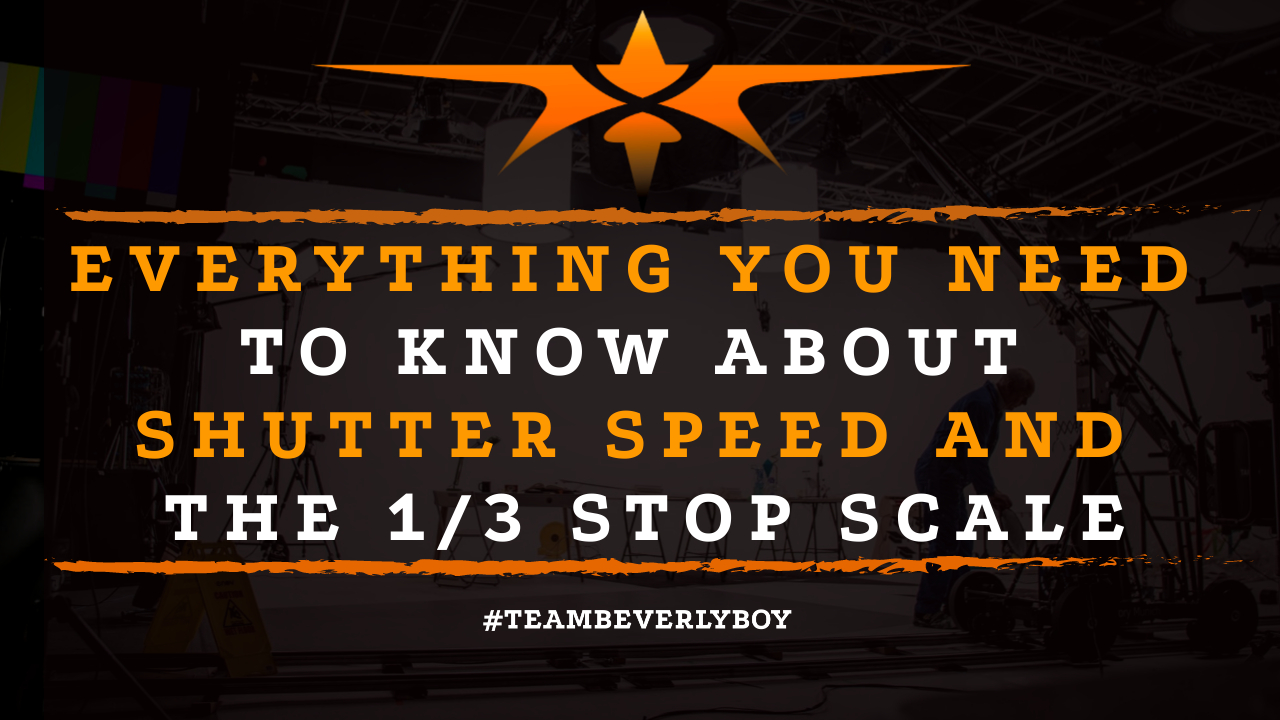
Everything You Need to Know about Shutter Speed and the 1/3 Stop Scale
Learning how shutter speeds, F-stops, and the ⅓ stop scale as well as things like aperture, lighting, ISO and various other elements all work together to help a cinematographer produce the perfect footage can be overwhelming to those aspiring to learn all of these important skills. At first, it may seem like there’s just too much to learn; as there is far too much to figure out and to memorize in order to truly capture amazing footage. However, a lot can come from a cinematographer learning to fully understand shutter speed and the ⅓ stop scale.

What is Shutter Speed?
Shutter speed represents the amount of time that your camera shutter remains open when an image or video is captured. Shutter speeds are measured in whole seconds or fractions of a whole second, largely because early shutter speeds were a full second or more long.
However, today’s shutter speeds can be as fast as 1/4000th of a second. We typically see shutter speeds being measured in a range of 1/4000th to 30 seconds.
Keep in mind that as you look to justify shutter speed and the ⅓ stop scale, you should have at least a basic understanding of shutter speed, aperture, and ISO; the three elements of the exposure triangle.
Faster shutter speeds let less light into the camera sensor, but can be ideal for capturing bright light scenes or scenes that involve fast movement.
Likewise, slower shutter speeds allow more light to pass over the camera sensor, making them ideal for lower light situations or for producing a blur effect in moderate to bright light situations with movement involved.
What is the ⅓ Stop Scale?
Digital cameras allow for shutter speed and aperture to be controlled in a variety of ways, generally providing the option of 1/3., ½, and full stop increments. Thus, the ⅓ stop scale is one of the ways that a digital camera allows for shutter speed and aperture to be measured.
It represents one third of a second or one third of the total increment.
The ⅓ stop scale is actually the default increment setting that most cameras come with, however cinematographers may wish to adjust their digital cameras in order to change the f/stop value from ⅓ to ½ or to a full stop.
Keep in mind though, that making this change to f-stop value would also result in other values being different in the end.
Shutter Speed and the ⅓ Stop Scale
So what does shutter speed and the ⅓ stop scale seem to have in common? Everything! The ⅓ stop scale is the scale by which you can adjust your shutter speed to react in thirds of a second.
Cameras work in ⅓ stops, so that if you’re trying to adjust your shutter speed you’ll typically have to adjust 3 “clicks” in order to produce a 1 stop change. Each click of your camera dial represents a ⅓ stop, part of the ⅓ stop scale.
When looking at shutter speed and the ⅓ stop scale, you’re essentially taking a time measurement (shutter speed) and converting that into a “stop.” Every double amount of time your camera shutter remains open represents a single stop. So, for example:
If your shutter speed is 1/500, a 1 stop change would be equivalent to two ⅓ stop changes, so that to change 1 full stop from 1/500 you would go to 1/250, but in 1/3 stop scale, you would go 3 clicks from 1/500 to 1/400 to 1/320 to 1/250.
Every time your camera dial clicks, you’re representing ⅓ stop scale and every three clicks represents a 1 stop change in shutter speed.
Understanding shutter speed and the ⅓ stop scale is important, but it’s understandably confusing to many. Several different tricks and tips exist to help you learn the ⅓ stop scale and how it impacts shutter speed.
Essentially though, each full stop represents a doubling in the amount of time the shutter speed increases, or decreases. Each ⅓ stop scale represents a fraction of that doubling of time.


